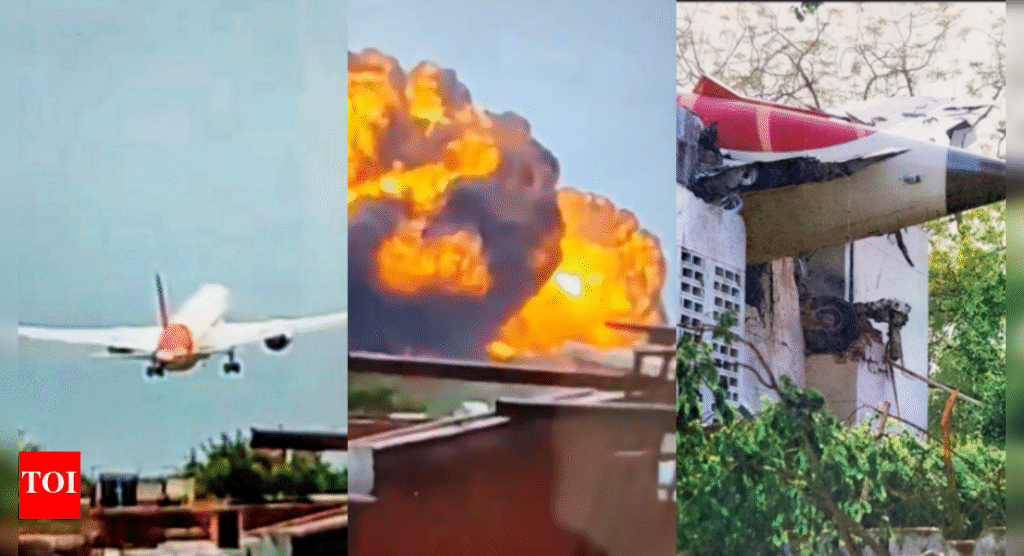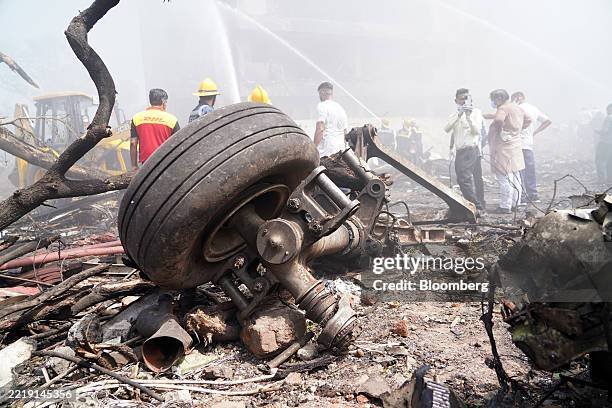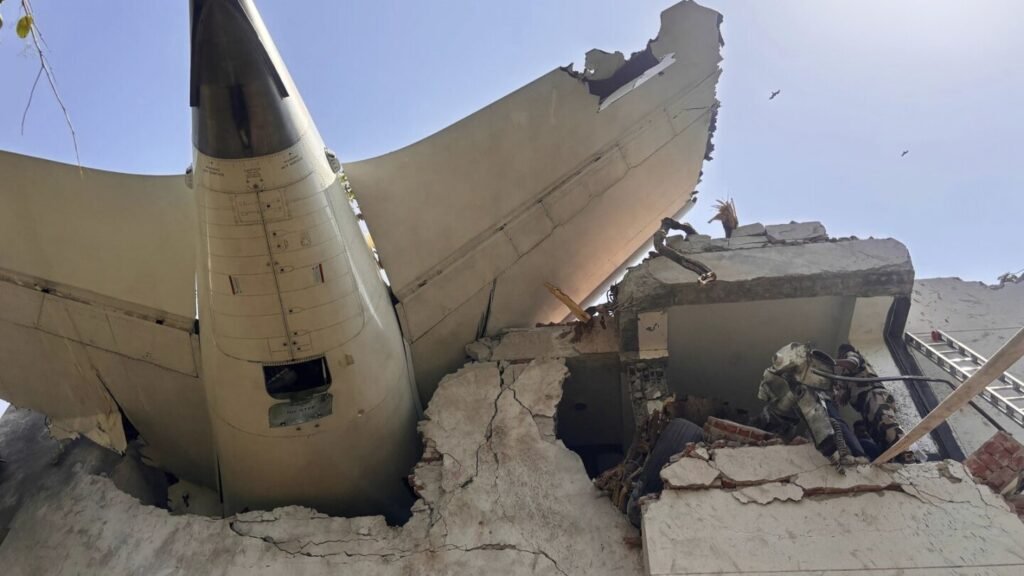
1. Overview of the Incident
On the morning of June 12, 2025, Air India Flight AI171, a Boeing 787-8 Dreamliner, departed from Sardar Vallabhbhai Patel International Airport in Ahmedabad en route to London Heathrow. Barely 30 seconds after takeoff, the aircraft crashed into a nearby college hostel complex, killing 241 onboard (including 15 crew) and 19 people on the ground. Only one survivor was recovered from the wreckage — a 9-year-old child seated near the aft section.
The crash became India’s deadliest aviation disaster in decades, prompting immediate investigations by the Aircraft Accident Investigation Bureau (AAIB), with international support from the NTSB (U.S.), UK AAIB, Boeing, and GE Aviation.
2. Aircraft and Crew Details
Aircraft Type: Boeing 787-8 Dreamliner
Tail Number: VT-ANH
Age: 9.2 years
Engines: 2 × General Electric GEnx-1B engines
Flight Hours: ~32,000
Flight Crew: 2 pilots (Captain with 12,500 hours, First Officer with 4,200 hours)
Both pilots were experienced, and the aircraft had completed its last major maintenance check just 11 days prior.

3. Timeline of Events
Pre-Flight
Routine preflight checks reportedly showed no anomalies.
Weather: VMC (Visual Meteorological Conditions), clear skies, light wind.
No issues during taxi or takeoff roll.
08:08:36 UTC
- Aircraft accelerates past 180 knots; rotation initiated.
08:08:42 UTC
- Engine 2 Fuel Control Switch suddenly moved from RUN to CUTOFF.
08:08:43 UTC
- Engine 1 Fuel Control Switch also moved from RUN to CUTOFF.
08:08:44–08:09:05 UTC
- Both engines lose thrust. Ram Air Turbine (RAT) deploys to maintain basic flight controls and power.
08:09:10 UTC
Pilots attempt relight of engines. Cockpit voice recorder (CVR) captures confusion:
Captain: “Why did you cut off?”
First Officer: “I didn’t touch it!”
08:09:25 UTC
Engine 1 restarts but fails to stabilize power output. Engine 2 fails relight.
08:09:34 UTC
Aircraft stalls at 900 feet AGL and enters a high sink rate.
08:09:39 UTC
The aircraft impacts a building 2.1 km from the runway end.
4. Preliminary AAIB Findings
The AAIB’s 15-page preliminary report, released in July 2025, offered the following conclusions:
a) Cause of Engine Shutdown
Fuel cutoff switches were manually or mechanically moved to “CUTOFF.”
No indication of system malfunction, sabotage, or external interference.
Investigation ongoing to determine:
If switches were moved intentionally or accidentally.
Whether a known 2018 FAA advisory about faulty fuel switch latches played a role.
b) Human Factors
CVR indicated disorientation in the cockpit.
No signs of pilot argument or deliberate action.
Simulator testing ongoing to determine if accidental hand motion or turbulence could have triggered switches.
c) Cockpit Design Issues
Boeing 787’s fuel control switches are physically close to other controls.
Several safety experts previously raised concerns about inadvertent contact.
d) System Redundancy and RAT Deployment
RAT (Ram Air Turbine) deployed as designed.
Basic flight systems remained functional.
Aircraft did not have enough altitude/time to recover engine power.

5. Technical Aspects Under Review
i) Fuel Control Switch Design
Possible design flaw: lack of guard cover over switches.
Boeing and GE initiated engineering reviews for potential redesign.
ii) Boeing 787 Engine Relight Protocol
Engine relight timing vs altitude was not favorable.
GEnx engines take up to 30 seconds to stabilize post relight — time AI171 didn’t have.
iii) Maintenance and Training
No known issues or lapsed inspections.
Crew met all mandatory simulator training, including emergency engine-out scenarios.
6. Regulatory and Safety Implications
Domestic Response (India):
DGCA ordered immediate review of cockpit switch safety and issued temporary airworthiness directives.
Mandated enhanced simulator sessions focusing on fuel control switch anomalies.
International Oversight:
FAA and EASA requested urgent inspection data from all 787 operators.
Ongoing evaluation of past airworthiness advisories.
NTSB investigating historical incidents of accidental switch movements.
7. Survivability and Emergency Response
Aircraft was largely intact on impact, but post-crash fire overwhelmed the fuselage within minutes.
Only one passenger survived — a child seated in Row 41, near the aft lavatory.
Emergency crews reached the crash site within 12 minutes but faced intense flames and structural collapse.
8. Media and Public Reaction
Widespread public outcry over safety.
Families of victims demanded accountability and transparency.
Comparisons drawn with previous Air India accidents, including the 2020 Kozhikode crash.
9. Final Report and Next Steps
The final AAIB report is expected within 12 months, though interim updates may be released. Boeing, GE, and regulatory agencies continue to assist.
Pending investigation areas:
Root cause of switch movement (manual error vs design fault).
Simulator testing results to confirm crew response validity.
Wreckage reconstruction to validate FDR data and assess survivability zones.

10. Broader Industry Impact
Several international carriers (including ANA, Qatar Airways, and British Airways) began internal audits of cockpit hardware and crew training.
Pressure is mounting on Boeing to implement a fuel switch lockout redesign.
Conclusion
The tragedy of Air India Flight AI171 serves as a harsh reminder of how multiple small failures — in design, human factors, or oversight — can cascade into catastrophe. While initial data points to a highly unusual sequence involving manual shutdown of both engines, only a comprehensive analysis will determine accountability and long-term solutions.
The incident may ultimately reshape how airlines train pilots for inadvertent control input scenarios and could lead to structural redesigns in cockpit ergonomics across modern airliners.
